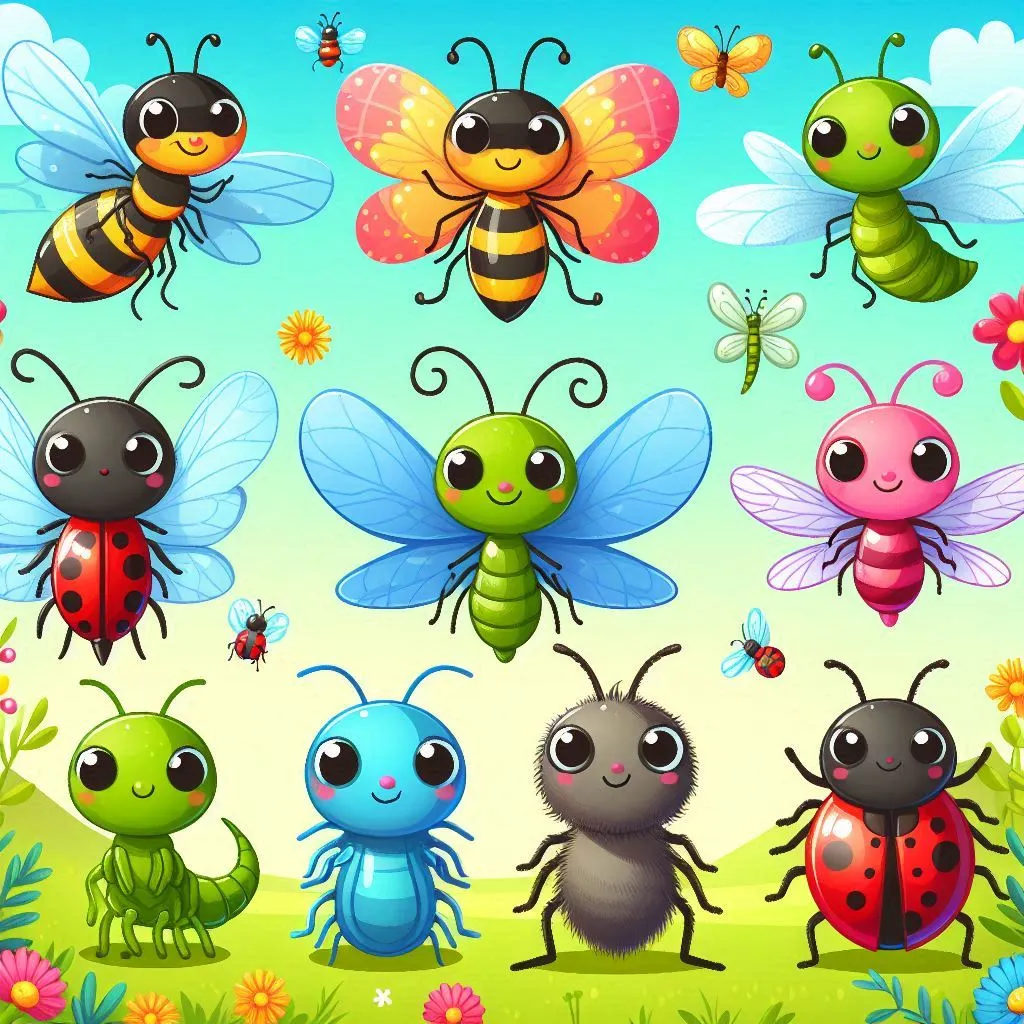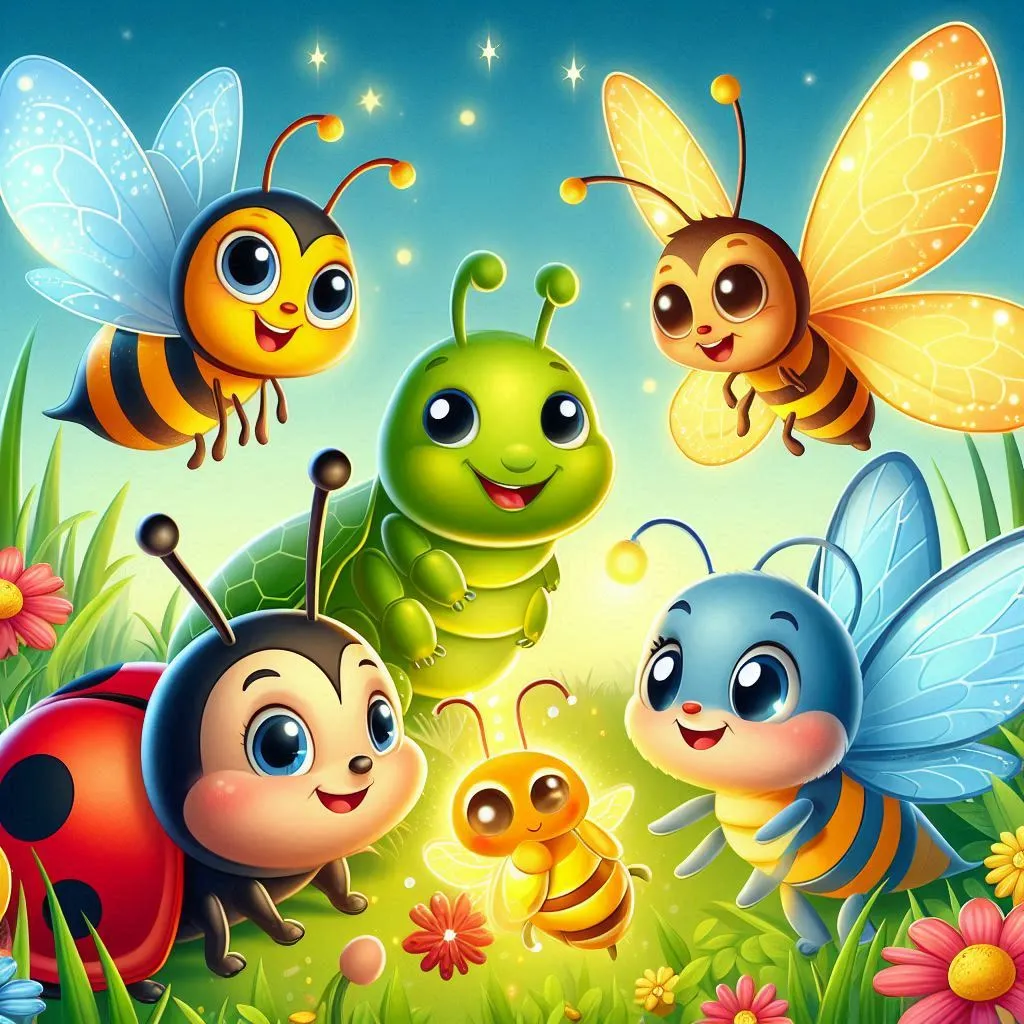Bugs Flashcards – A Fun Way to Learn About Insects!
Bugs are fascinating creatures that play a vital role in our environment. From pollinating
plants to breaking down organic material, these tiny creatures contribute to the balance of
nature. Bugs Flashcards are an exciting and engaging way to introduce children
to different types of bugs while making learning fun and interactive. Whether it's an
ant marching in a line, a butterfly fluttering its colorful
wings, or a spider spinning its web, each bug has unique characteristics that
make them special.
The concept of flashcards is widely used for educational purposes because they help in visual
learning. Bugs Flashcards allow children to recognize different insects and
associate them with their names and features. This learning method improves memory retention and
helps children understand the natural world around them.

Why Use Bugs Flashcards?
There are several reasons why Bugs Flashcards are a great educational tool:
- Visual Learning: Pictures of bugs make it easier for children to identify
and remember them.
- Interactive and Engaging: Kids love colorful images and interactive
learning activities.
- Boosts Memory: Flashcards help in strengthening memory by repetitive
learning.
- Encourages Curiosity: Learning about bugs sparks curiosity and interest in
nature.
Types of Bugs Included in Flashcards
Bugs Flashcards typically include a variety of insects with unique
characteristics. Here are ten common bugs found in flashcard sets:
- Ant: Hardworking insects that live in colonies and work together.
- Bee: Famous for making honey and playing a key role in pollination.
- Butterfly: Beautiful insects with colorful wings that go through
metamorphosis.
- Dragonfly: Known for their swift flight and large, transparent wings.
- Grasshopper: Can jump long distances and are often found in grassy fields.
- Ladybug: Small, red insects with black spots that help control pests.
- Mosquito: Tiny insects that feed on blood and are known for buzzing sounds.
- Spider: Arachnids that spin webs to catch their prey.
- Firefly: Also called lightning bugs, they glow in the dark due to
bioluminescence.
- Beetle: Insects with hard shells that come in various colors and sizes.
How Bugs Flashcards Improve Learning
Flashcards make learning about bugs more enjoyable and effective. They help in:
- Building vocabulary by introducing new words and names of insects.
- Developing observation skills by recognizing different bugs.
- Enhancing cognitive abilities through pattern recognition.
- Creating an interactive learning environment where kids can discuss what
they see.
Fun Activities with Bugs Flashcards
Learning doesn’t have to be boring! Here are some fun ways to use Bugs
Flashcards:
- Matching Game: Place the cards face down and try to find pairs of bugs.
- Storytelling: Encourage children to make up stories about different bugs.
- Bug Hunt: Take kids outside and let them find real-life versions of the
bugs on their flashcards.
- Sorting Activity: Arrange the bugs based on size, color, or type (flying
vs. crawling insects).

Benefits of Using Bugs Flashcards
Bugs Flashcards provide a variety of benefits for children, including:
- Increases Knowledge: Kids learn about different insects and their roles in
nature.
- Boosts Engagement: Colorful images keep children interested.
- Encourages Outdoor Exploration: Kids may become more curious about nature
and bugs in their surroundings.
- Improves Focus: Flashcards require attention and concentration, which helps
with learning.
Conclusion
Bugs Flashcards are a fantastic educational tool that introduces children to
the world of insects in an engaging and fun way. Whether it’s learning about how
bees make honey, how grasshoppers jump, or how
fireflies glow at night, these flashcards make learning enjoyable. By using
flashcards, children develop a deeper appreciation for nature and its tiny creatures.
If you are looking for a simple yet effective way to teach kids about bugs, then Bugs
Flashcards are the perfect solution. With their bright images, engaging content,
and interactive learning techniques, they make education exciting and memorable!

